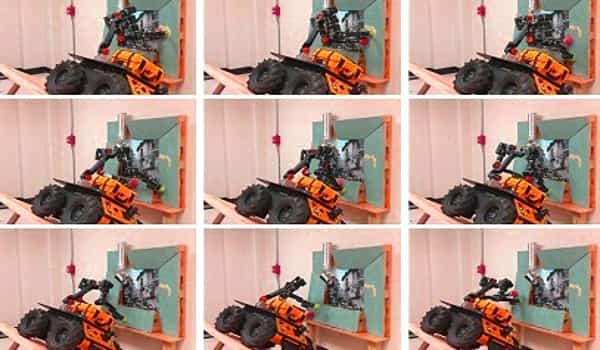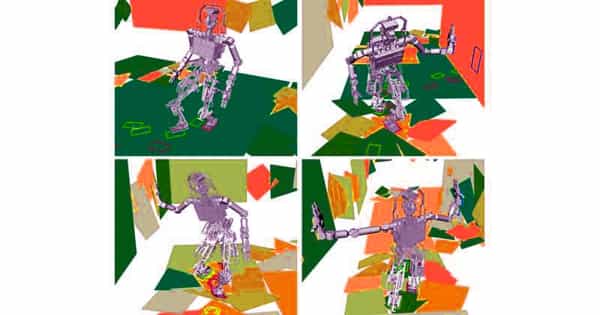Humans are skilled at using hands to maintain balance, whether it’s by grabbing a railing as we climb stairs, walking with a cane, or gripping a strap on the subway. Now, researchers at the University of Michigan have enabled humanoid robots to use their hands in a similar manner, allowing the robots to better navigate rough terrain such as disaster areas or construction sites.
Robots that must use their arms to navigate treacherous terrain have gained speed thanks to a new path planning approach. The improved algorithm path planning algorithm found successful paths three times as often as standard algorithms while taking much less time to process.
The improved algorithm path planning algorithm found successful paths three times as often as standard algorithms while taking much less time to process. According to U-M researchers, a new algorithm speeds up path planning for robots that use arm-like appendages to maintain balance on treacherous terrain such as disaster areas or construction sites. The improved path planning algorithm found successful paths three times more frequently than standard algorithms while requiring far less processing time.
Robots that need to use their arms to make their way across treacherous terrain just got a speed upgrade with a new path planning approach, developed by University of Michigan researchers.
“A robot won’t always be able to balance itself and move forward with just its feet in a collapsed building or on very rough terrain,” said Dmitry Berenson, associate professor of electrical and computer engineering and core faculty at the Robotics Institute.
“New algorithms are required to determine where to place both feet and hands. To maintain stability, you must coordinate all of these limbs together, which is a very difficult problem.”
The research allows robots to assess the difficulty of the terrain before calculating a successful path forward, which could include bracing against the wall with one or two hands while taking the next step forward.

“First, we used machine learning to teach the robot how to place its hands and feet to maintain balance and progress,” said Yu-Chi Lin, a recent robotics Ph.D. graduate and software engineer at Nuro Inc. “Then, when placed in a new, complex environment, the robot can use what it has learned to determine how traversable a path is, allowing it to find a path to the goal much more quickly.”
Even with this traversability estimate, however, it takes time to plan a long path using traditional planning algorithms. “It would take a very long time if we tried to find all the hand and foot locations along a long path,” Berenson said.
As a result, the team took a “divide-and-conquer” approach, dividing a path into difficult-to-traverse sections where they could use their learning-based method, and easier-to-traverse sections where a simpler path planning method worked better.
“That sounds simple, but it’s extremely difficult to know how to divide that problem correctly and which planning method to use for each segment,” Lin explained. They will need a geometric model of the entire environment to accomplish this. In practice, this could be accomplished with a flying drone that scouts ahead of the robot.
The team’s method outperformed previous methods in both success and total time to plan in a virtual experiment with a humanoid robot in a corridor of rubble, which is important when quick action is required in disaster scenarios. Over 50 trials, their method achieved the goal 84% of the time, compared to 26% for the basic path planner, and took just over two minutes to plan, compared to more than three minutes for the basic path planner.
The team also demonstrated their method’s ability to operate on a real-world mobile manipulator, which is a wheeled robot with a torso and two arms. Because the robot’s base was placed on a steep ramp, it had to brace itself on an uneven surface as it moved. The robot used the team’s method to plan a path in less than a tenth of a second, compared to more than 3.5 seconds with the standard path planner.
The team hopes to incorporate dynamically stable motion, similar to the natural movement of humans and animals, in future work, which would free the robot from having to be constantly in balance and could improve its speed of movement.
















